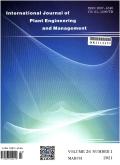Replacement of a Hot Cell Window at the Hot Fuel Examination Facility
International Journal of Plant Engineering and Management
Pub Date : 2018-07-22
DOI:10.1115/ICONE26-82422
引用次数: 0
Abstract
During the course of 42 years of irradiated operations in the Hot Fuel Examination Facility at the Idaho National Laboratory (INL), a hot cell window had never been replaced. Recently, slow deterioration of a window seal resulted in mineral oil leaking at a rate of over a liter per month from the window tank unit on through the protective A-slab seal and into the hot cell. A hot cell window consists of both a steel tank unit with five slabs of glass of varying thicknesses with the remaining free space filled with clear mineral oil, and a thinner protective interior A-slab of glass. The repair solution was to remove and replace the A-slab window followed by replacing the window tank unit in two distinct phases. The facility original A-slab design was a leak tight barrier and a frame that was “L” shaped with a gasket between the glass and the window flange. Problems with the gasket adhering to the glass and the window flange resulted in pulling the glass from the frame during initial installation activities. Due to the adhesion problem, the gasket was changed to a dust seal during commissioning the facility. Over time, the window tank unit mineral oil leak flowed through this dust seal. Replacing the leaking tank unit necessitated the need for a new leak tight boundary as well as provide a method to drain the accumulated oil behind the A-slab until the tank unit could be replaced. These criteria led to a new A-slab design to be installed. Initially, removal and replacement of the A-slab was performed in the main cell (hot side) to reestablish a leak tight barrier. Transfers of the windows and removal of the bolts/reinstallation of new bolts were all performed with specialized equipment designed for remote operations in a hazardous environment using remote manipulators and cranes. Removal and replacement of the window tank unit via the operating corridor (cold side) was scheduled during a facility outage to accommodate availability of contract service personnel who specialize in hot cell windows. Due to the complexity of the replacement task, approximately 30% of the personnel on site were involved in the window replacement. Engineering, facility operations and radiation control personnel were primary contributors with electricians, carpenters and the analytical laboratory personnel contributing, as well. The multi-year installation program was safely concluded allowing the facility to resume full operations with the window properly sealed.更换热燃料检查设施的热电池窗口
在爱达荷国家实验室(INL)热燃料检查设施42年的辐照运行过程中,热室窗口从未更换过。最近,由于窗口密封的缓慢恶化,导致矿物油以每月超过1升的速度从窗口储罐单元泄漏,通过保护性a板密封进入热室。热室窗由五个不同厚度的玻璃板组成,剩余的自由空间填充透明矿物油,以及一个更薄的保护性内部玻璃板。修复方案是拆除和更换a板窗,然后分两个阶段更换窗罐单元。该设施最初的a板设计是一个密封屏障和一个“L”形框架,玻璃和窗户法兰之间有一个垫圈。在最初的安装过程中,玻璃和窗户法兰上的垫圈出现了问题,导致玻璃从框架上脱落。由于附着力问题,在设备调试期间,将垫圈改为防尘密封。久而久之,窗口储罐单元的矿物油泄漏通过此粉尘密封流过。更换泄漏的储罐单元需要一个新的防漏边界,并提供一种方法来排放a板后面积聚的油,直到储罐单元可以更换。这些标准导致了新的a板设计的安装。最初,在主单元(热侧)进行了a板的移除和更换,以重新建立一个密封屏障。窗户的转移和螺栓的拆卸/新螺栓的重新安装都是通过专门的设备进行的,这些设备是为在危险环境中使用遥控机械手和起重机进行远程操作而设计的。通过操作通道(冷侧)拆除和更换窗口罐单元是在设施停机期间安排的,以适应专门从事热室窗口的合同服务人员的可用性。由于更换任务的复杂性,大约有30%的现场人员参与了更换窗户的工作。工程、设施操作和辐射控制人员是主要贡献者,电工、木匠和分析实验室人员也有贡献。多年的安装计划安全结束,使设施能够在窗口适当密封的情况下恢复全面运行。
本文章由计算机程序翻译,如有差异,请以英文原文为准。
求助全文
约1分钟内获得全文
求助全文

 求助内容:
求助内容: 应助结果提醒方式:
应助结果提醒方式:


